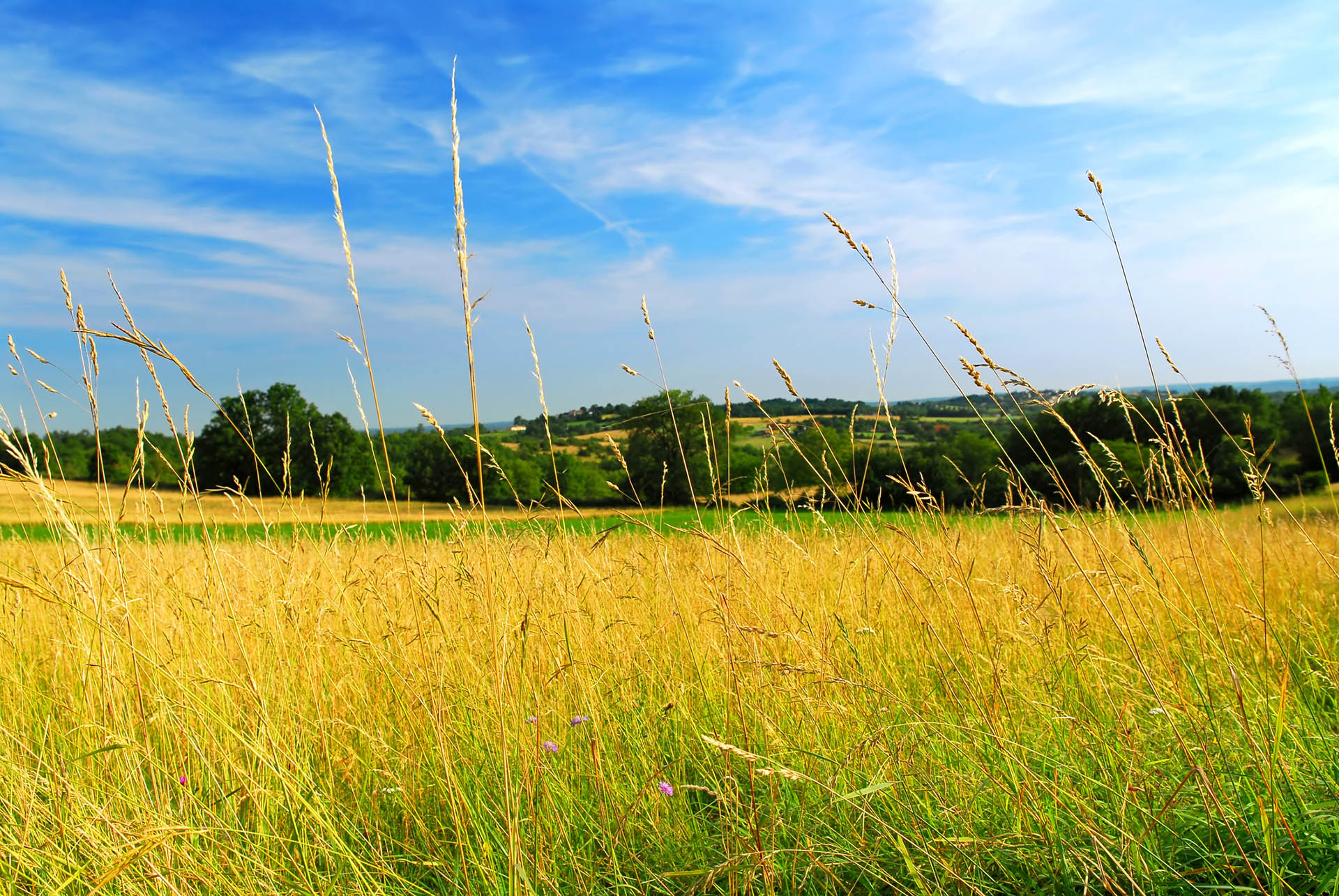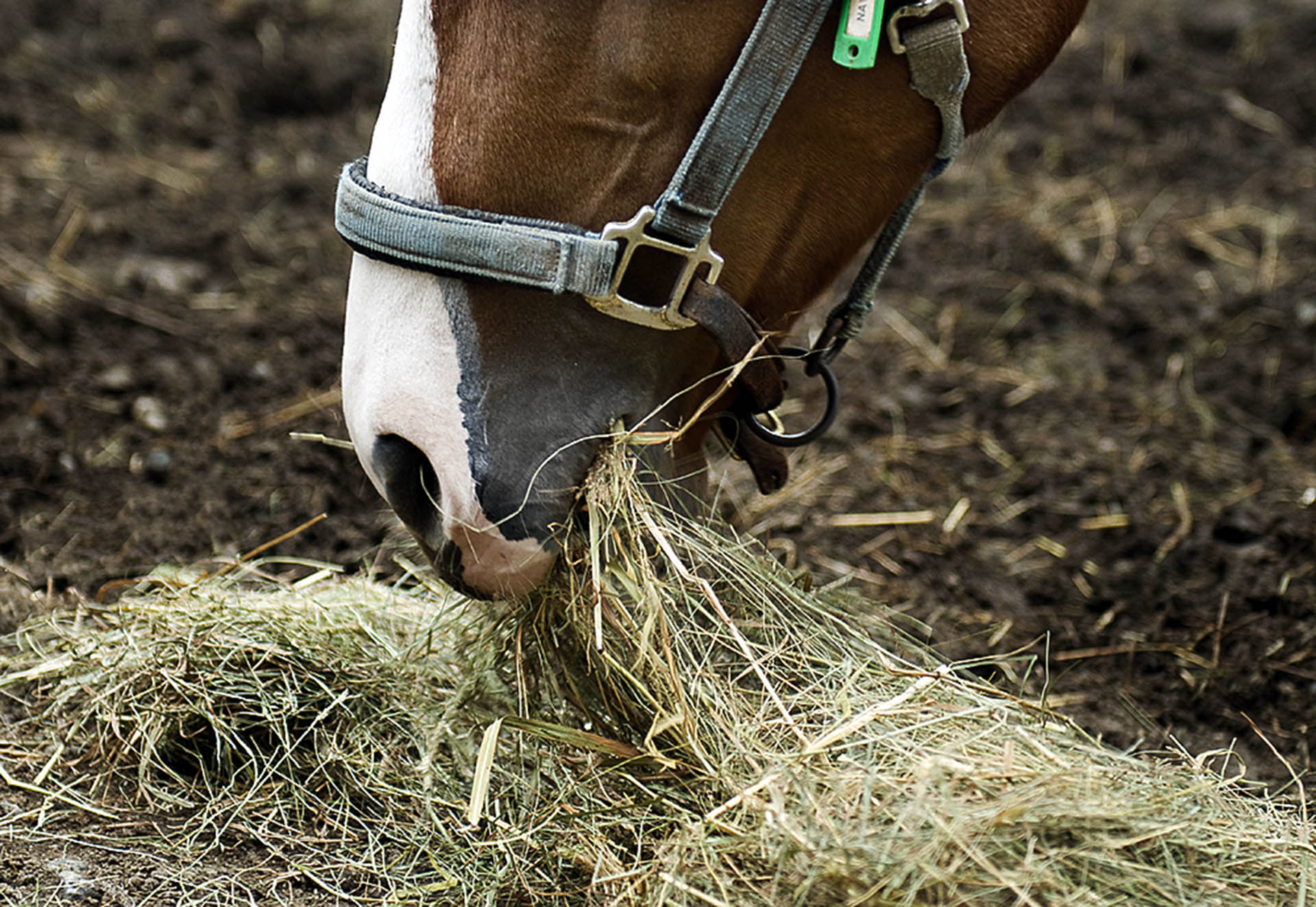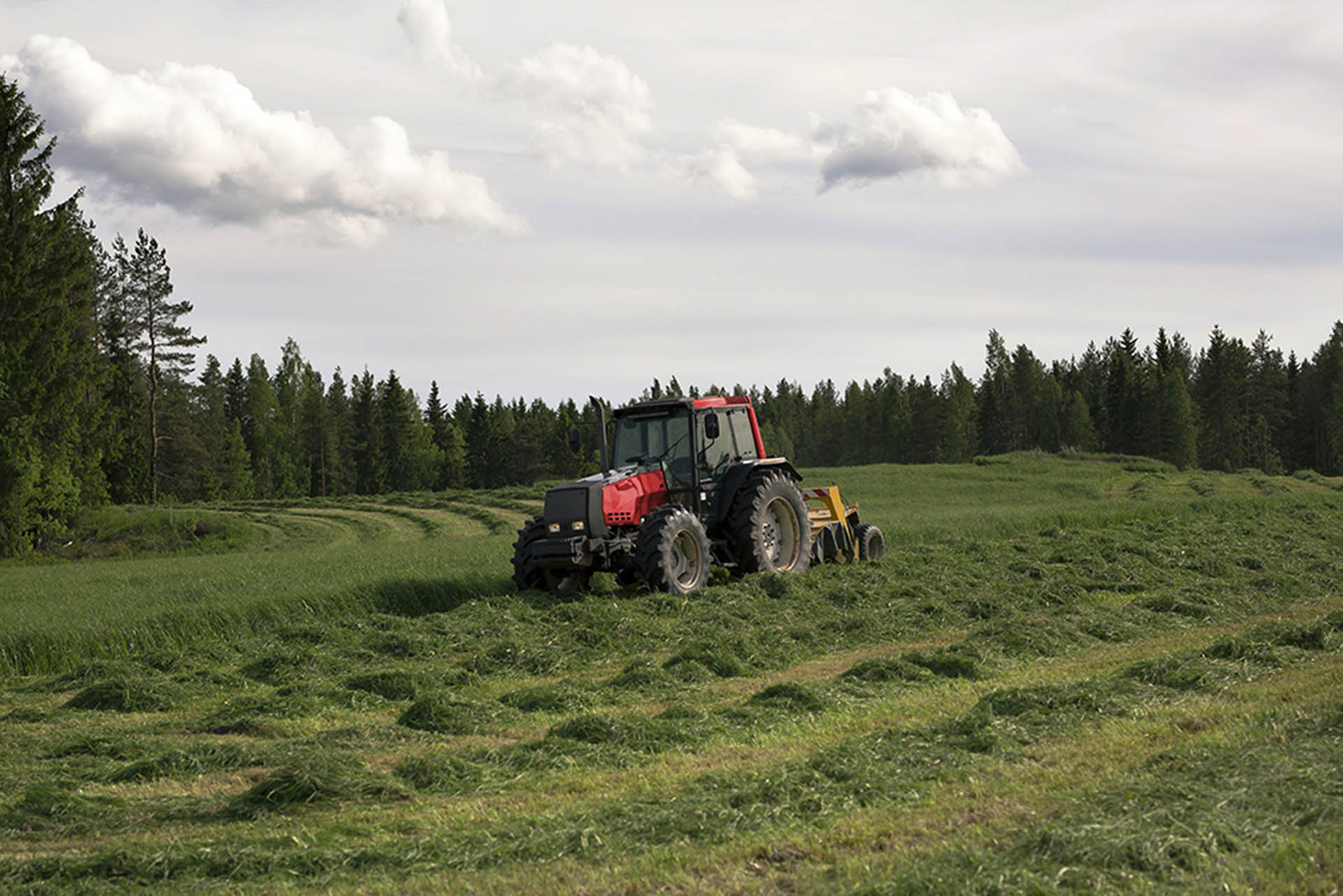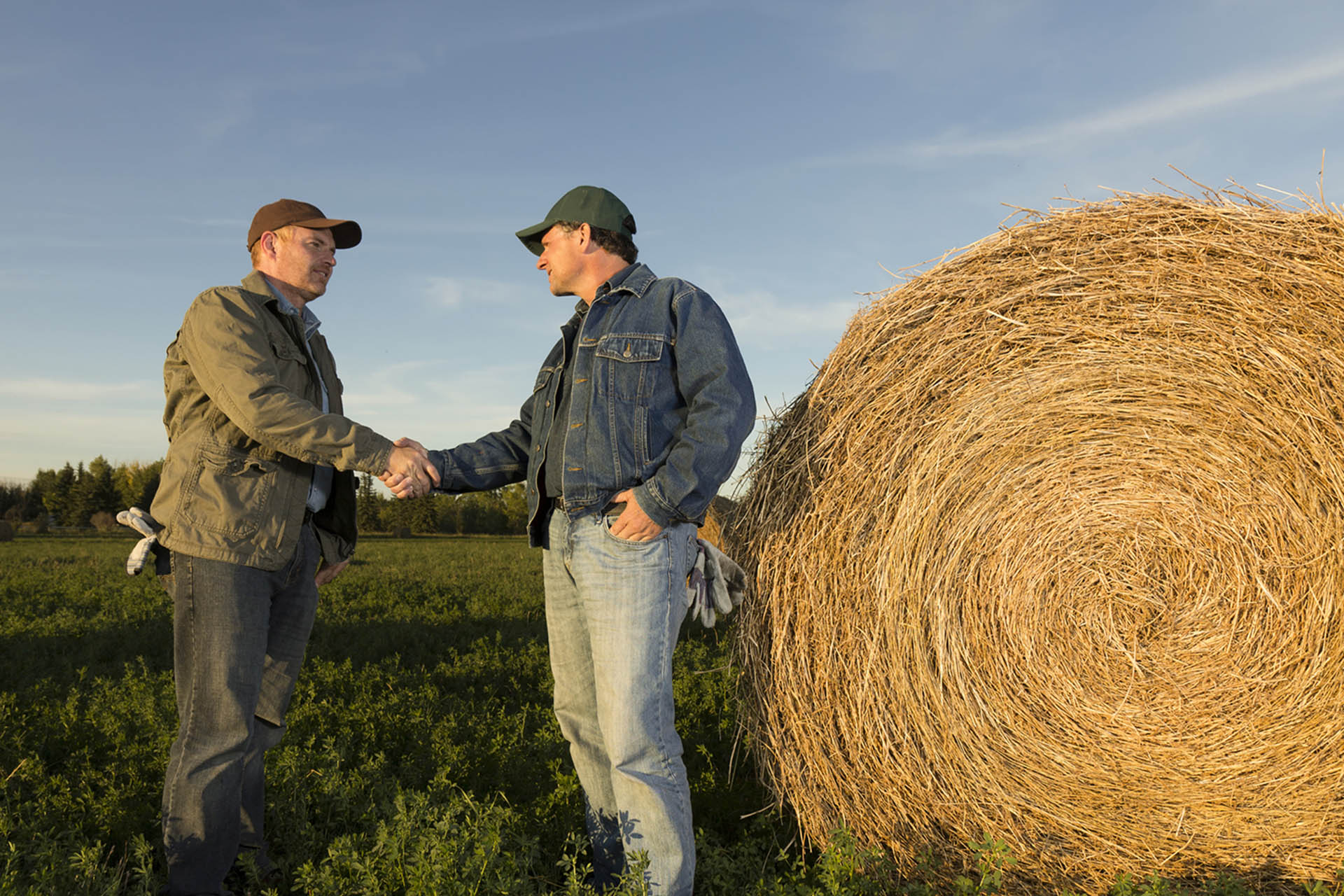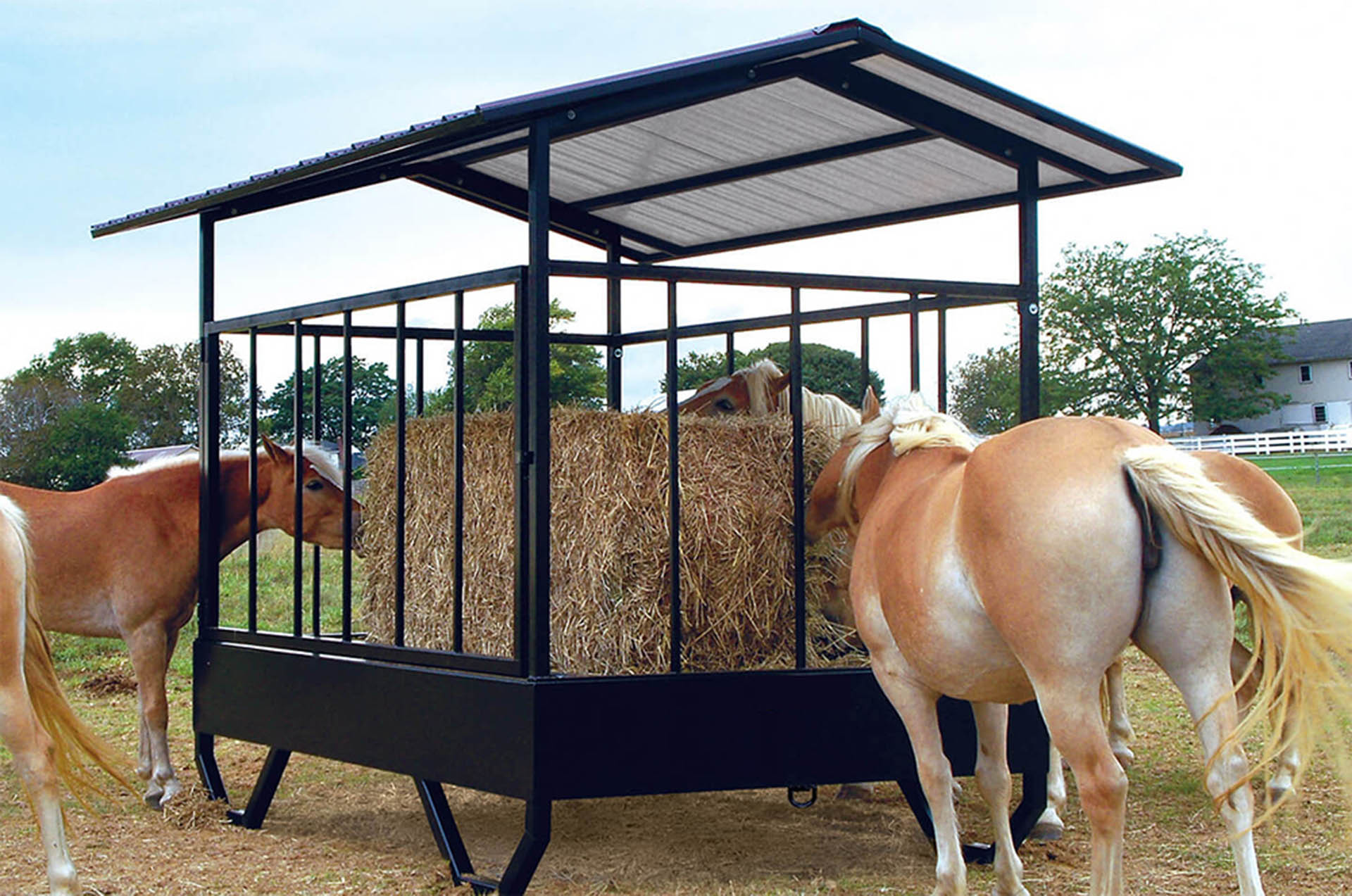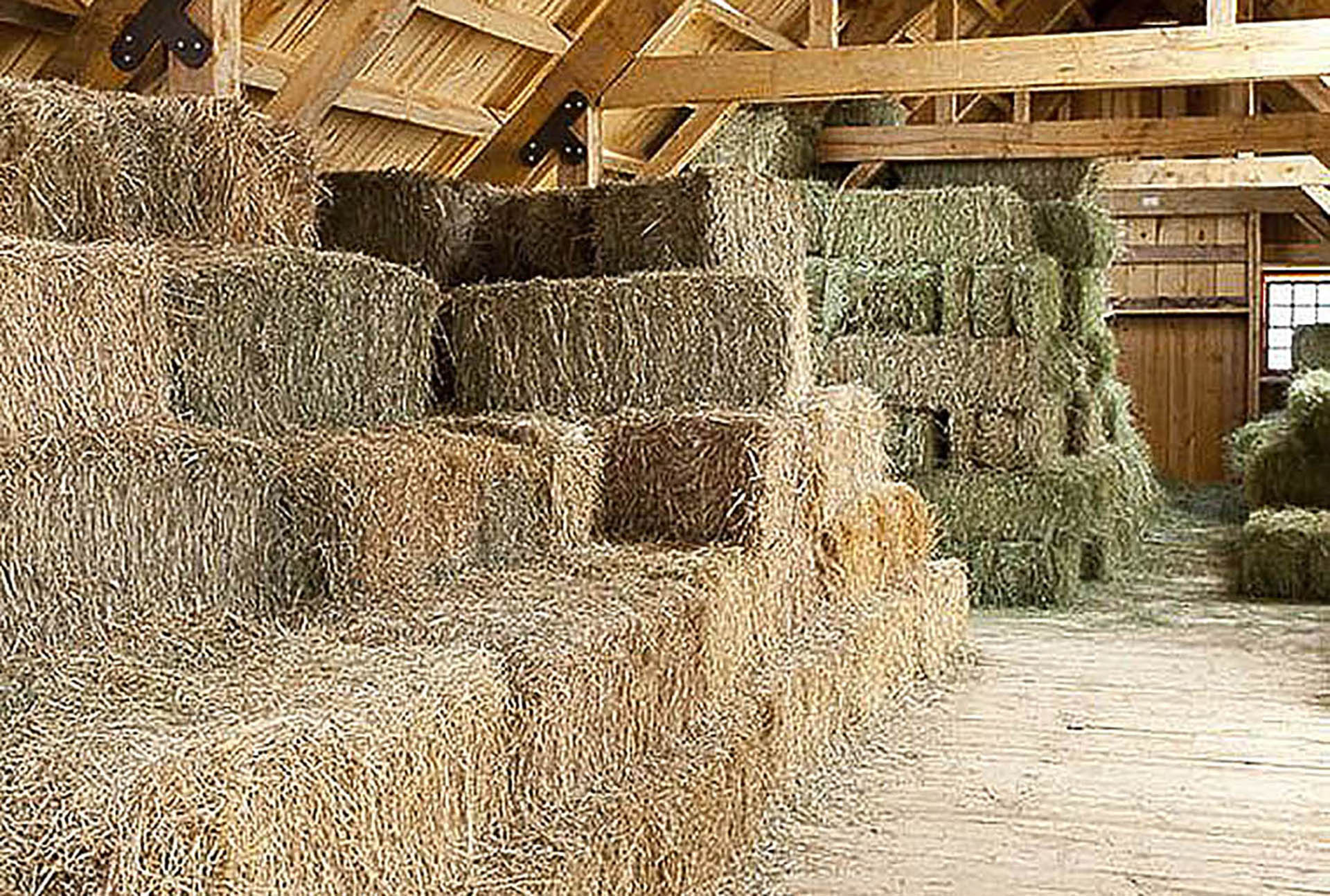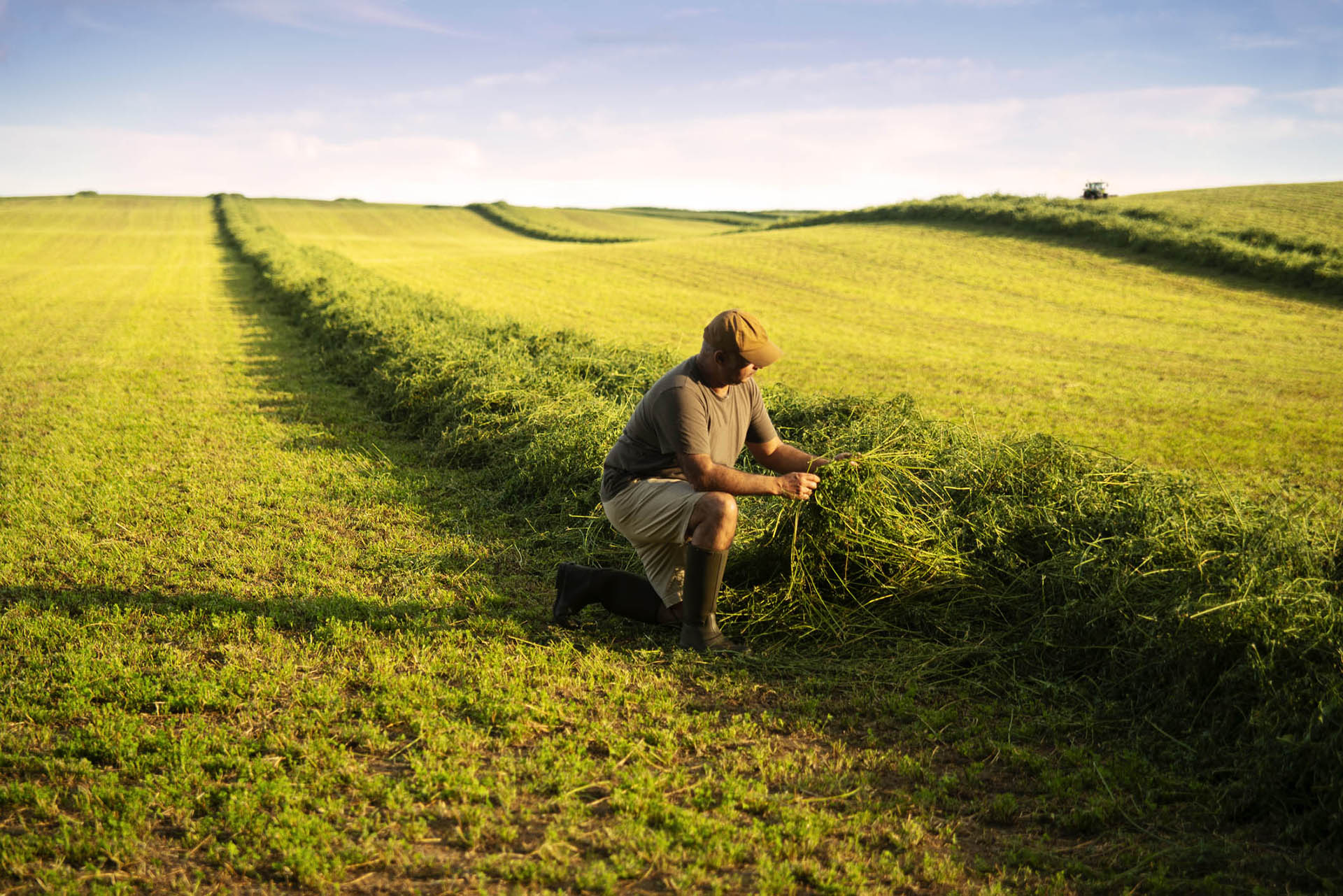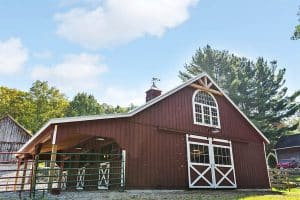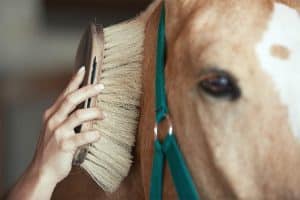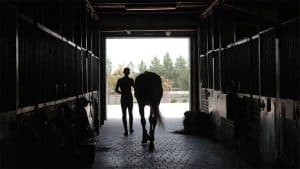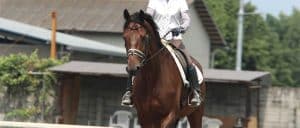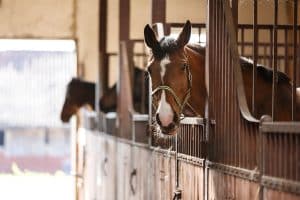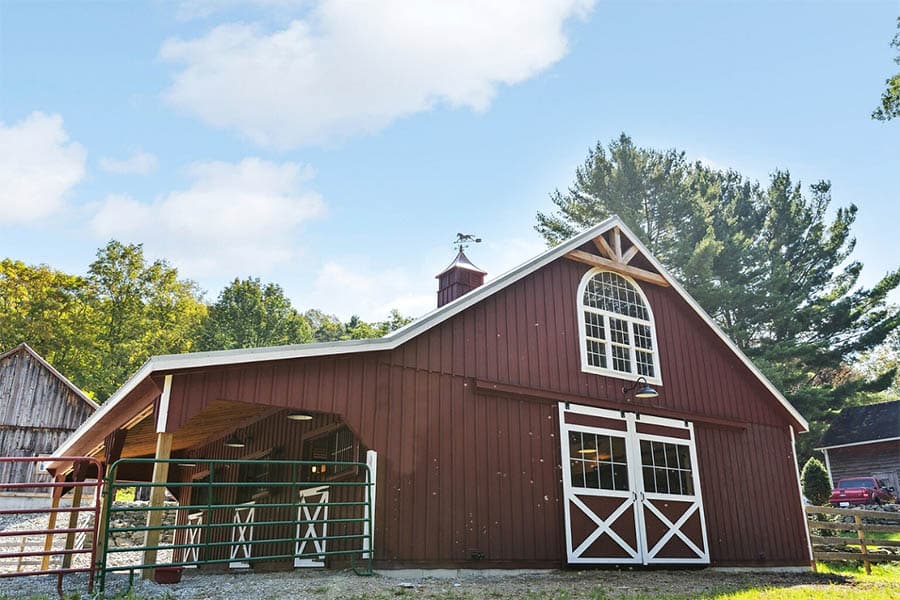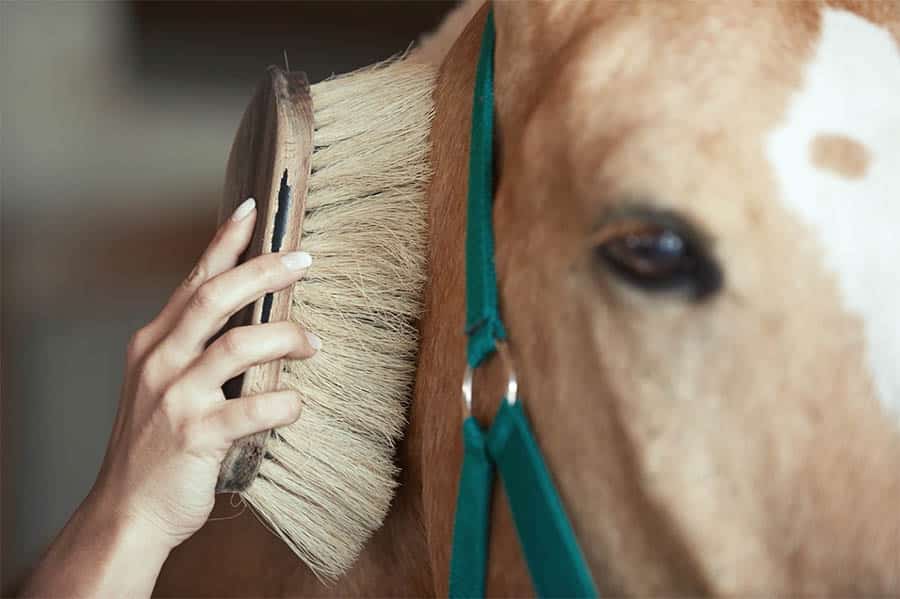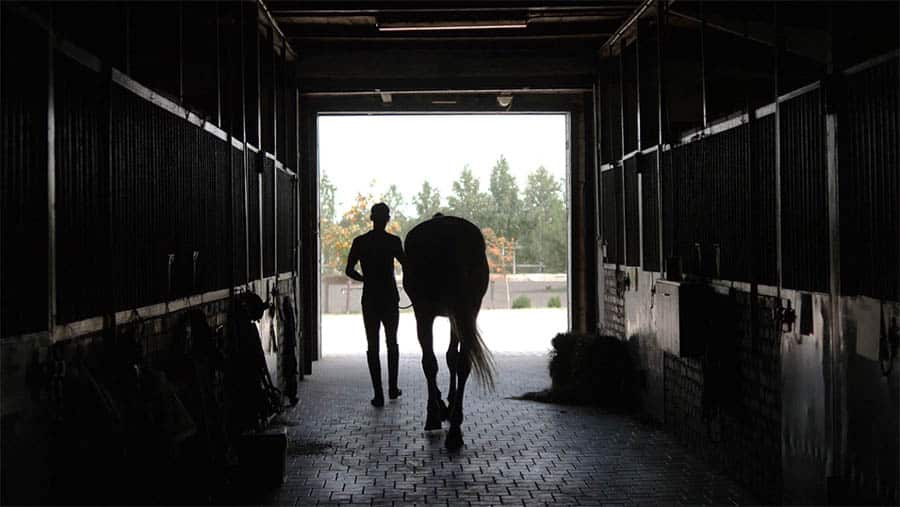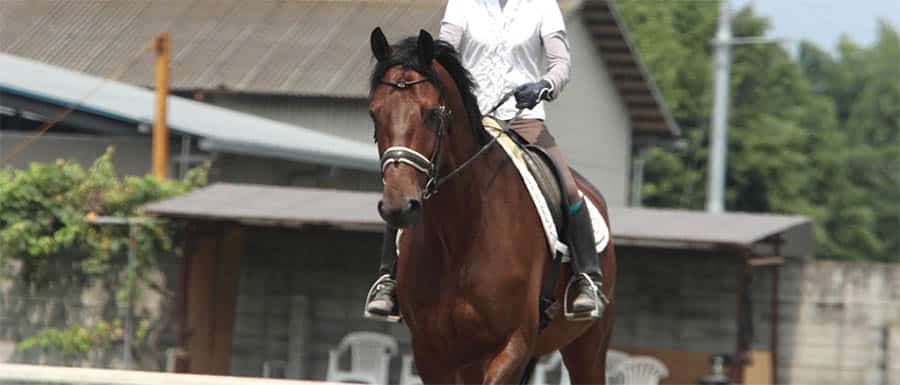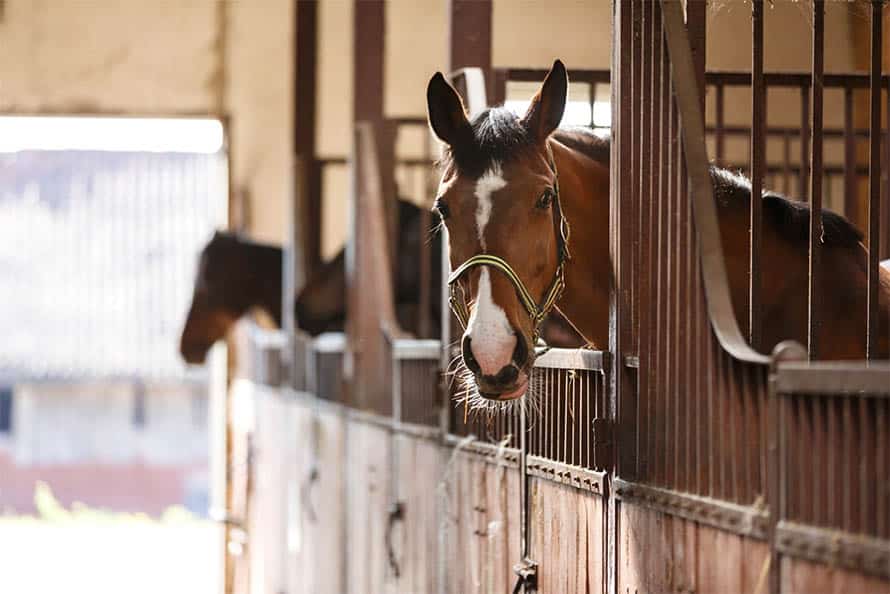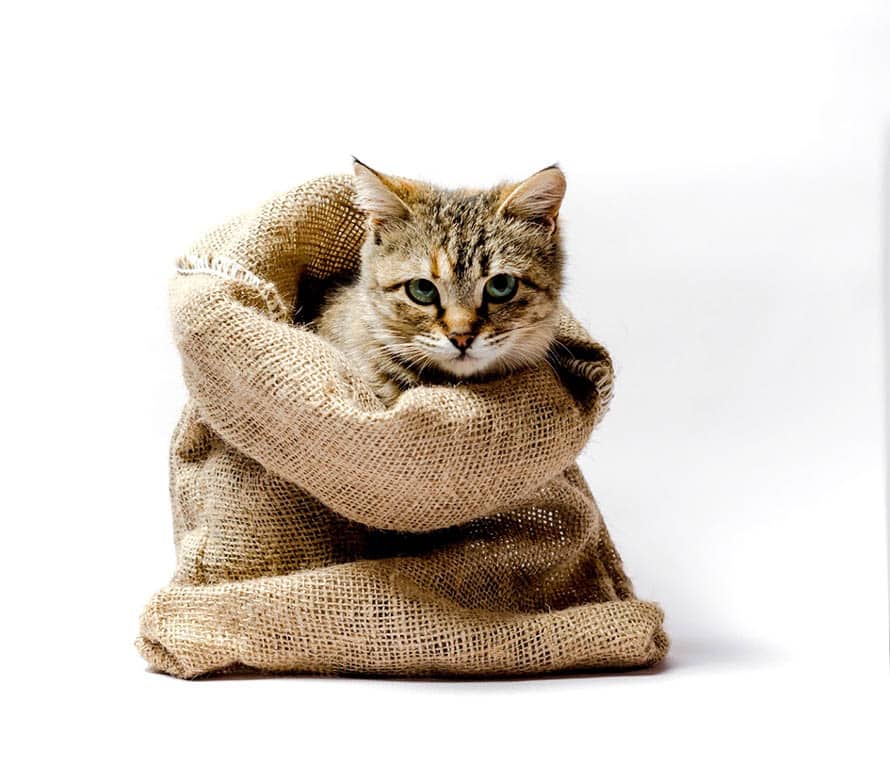Many property owners with extra acreage are tempted to make their own hay by knocking down a grass meadow and baling it up for either their own horses and/or to sell.
For horse owners it is wise to know what is growing before you mow. There are an extensive number of nefarious herbs and weeds that can harm horses. Some plants and weeds may be harmless for horses when growing but can become toxic when they dry out. This is in part because a horse grazing a pasture will most likely avoid them. But when dried the plant is harder for the equine to distinguish.
It is always a good idea to seek advice before you graze horses in a (new)pasture or mow down a meadow for hay. Local extension offices may provide an on-site visit from an expert to ‘forage’ your meadow, ascertain any toxic plants and give advice on how to best manage the land for hay. It may be necessary to start fields afresh by completely reseeding with a grass that will not only provide nutritious hay but will also be compatible with your location’s soil and climate.
An inexpensive soil test can point the way in terms of increasing yield and optimizing the nutritional content of the hay produced from the field. Both organic and chemical fertilizers are expensive, so it is smart to spend the extra time and effort to execute a simple soil test before blindly adding unnecessary products.
Once hay is produced it should be tested to ensure that – along with other products such as grain, mineral and vitamin supplements – your livestock will have a completely balanced menu. For example, in the Northeastern United States soils are notably poor in selenium. So, you may need to supplement your horse’s diet with an additional source of this crucial mineral to assure his nutritional needs are met.
It is not only the content of the forage that is important to consider when it comes to haymaking. It is also imperative to evaluate the topography and drainage of the ground beneath. For example, land with a steep slope will require more horsepower from the tractor and will also be more dangerous to cut.
A heavier tractor may be required to keep the haybine or discbine and – even more importantly – a baler with a wagon pulled behind, from pushing the tractor down a hill or causing a loss of control. Always mow a steep slope up and down, rather than across, for safety and be certain the tractor has the weight to stop a heavily loaded hay wagon and large baler from jackknifing and causing an accident.
If the field is littered with rocks protruding from the surface, their presence will damage the blades on the cutting equipment and bend tines on the rake/tedder and baler. A discbine is generally considered a better option than a haybine on land that is rocky, though the large cutter bar beneath a discbine can be bent if a rocky outcrop is hit. Be warned that this is a very expensive repair!
Check for the presence of rocks and debris during winter or early Spring and pick up rocks wherever possible before mowing. Carefully consider which type of machine is better suited for your particular acreage.
Equipment to make hay holds its value well over time but is, initially, expensive. Depreciation of the capital expense can help recover some costs through tax benefits for a horse farm business. There are many places to purchase and used equipment is commonly available. Look for auctions and agricultural sales both through dealers and direct from farmers. Check Craigslist. These resources may be a good place to start if you are on a tight budget.
If you would like your fields cut for hay but don’t want to or aren’t able to do it yourself consider hiring a contract farmer to do it for you.
Timing is always an issue when it comes to contract farming as, inevitably, all the hay in a region is ready to cut at the same time. Farm owners quickly become frustrated when they see their hay crop going over (going to seed), and the contracted farmer has not arrived to knock it down and bale it.
It is wise to execute a contract with the farmer undertaking the work and to ensure there is a clearly defined time window. Include a requirement to check for moisture content to ensure that the hay is safe to store and safe for horses to eat. Generally, hay for horses/safe storage inside a building should be baled at less than 14% moisture content.
The farmer may require you to take on the liability for any damage sustained by his equipment as a direct result of any debris in the field. Barbed wire, large rocks, or even abandoned cable (*often left close to the road by utility crews making repairs to the grid) all have the potential to cause serious damage to haying equipment. Check your fields carefully before signing up for this liability.
Another consideration when baling your own hay is the type of twine to use. Sisal twine is user-friendly for the handler and better for the environment. But mice love it! Poly twine may stand up better to chewing by mice. There is nothing more annoying than stacking a great pile of hay in neat squares then, when returning a few months later, finding every bale has been undone by dastardly mice chewing the string. A ‘suitcase’ fix using discarded twine to retie the bale for transport is possible but time consuming. Metal twine is not suitable for handling directly by hand – even with gloves – and requires adept use of a hay hook or the bales must be thrown.
Once the meadow is mowed and the hay is properly cured and baled, keeping it in best condition comes down to how it is stored. Small squares are best stacked with their strings on the vertical side to allow any moisture in the bales to move down the stack.
Stacked hay should be laid in one direction for the first layer with the 2nd layer in the other direction. Alternating the direction of the layers will help keep the stack secure. Pallets and/or a tarp laid under the base of a stack will help prevent moisture rising from the ground entering the stack and damaging the base layer.
Round bales can be dangerous to handle especially when stacking them high without a protective cage on the tractor. Special forks or other attachments are needed for the tractor or skid steer to handle these weighty bales. Round bales can also roll out of a stack and easily take out the wall of a building.
Round bales are becoming increasingly popular in the hay industry as they can be handled almost entirely by machine. However, without a proper ‘horse-friendly’ feeding unit there can be ALOT of waste. Horses love to pick at the bale, tromp the hay into a muddy patch and use it as bedding. Investment in an equine hay feeder can reduce your costs as much as 30% when it comes to the hay budget.
Loft space above a barn can be a handy place for hay storage and the use of a conveyor can save a lot of hard labor reaching the 2nd floor. The space should be dry and free of old hay or debris. Even the tiniest leaks in your barn roof can cause hay to spoil. Ventilation is important too. Store hay with an inch or two between each bale and keep gable vents/soffits clean so air can circulate.
This article on “The Seven Deadly Sins of Haymaking,” offers some good advice on the topic of how to successfully and safely make and store hay.
From a fire hazard perspective, building a separate hay storage structure can be a smart move especially for large quantities of hay. Many horse barn builders are able to facilitate a structure specifically for hay storage. Ensure the entrance doors are high enough to accommodate large equipment including hay wagons. A suggested height of 16’ to 18’ will provide adequate clearance for most operations.
If you opt for a horse barn without a loft such as a shedrow or low-profile center aisle barn, hay can be stored within an open fronted stall space. However, this space is extremely limited so storage elsewhere and a restock of the barn supply is a good option.
As with most new projects in life doing your homework before you embark enthusiastically into an unknown business can save much money and avoid heartache in the future. “Making hay” is more than sunshine and good luck…


